Knowing how to use bear spray could mean the difference between life and death. Don’t just buy bear spray and put it away – learn how to use it!
This guide aims to take you through the essentials of bear spray – from understanding what it is and why it’s an essential part of your outdoor kit, to debunking common misconceptions and teaching you how to use it effectively. We’ll delve into the nuances of when and how to use bear spray, discuss some alternatives, and shed light on important practices for storing and handling it. Additionally, we’ll explore what to do after a bear encounter, and how to navigate potential mishaps safely.
So, whether you’re an experienced hiker or a casual camper, this guide is designed to equip you with the knowledge and confidence needed to navigate bear-active regions responsibly. Because at the end of the day, the aim is to ensure a safe and respectful coexistence with the wild, in all its incredible diversity.

What Is Bear Spray: Your Essential Companion in the Wild
If you’re planning an adventure in bear country, bear spray should be on top of your packing list. But what exactly is this crucial tool and why is it so important?
Bear spray is a type of pepper spray that’s specifically designed to deter aggressive or charging bears. It’s not something you spray on yourself or your gear as a repellent, contrary to what some folks might think. Instead, it’s a last line of defense when a bear gets too close for comfort. Think of it as an animal-friendly way to say, “Hey, let’s keep our distance from each other.”
The main ingredient in bear spray is capsaicin and related capsaicinoids, which come from chili peppers. When the spray is directed towards a bear, these capsaicinoids irritate the eyes, nose, throat, and lungs of the bear, causing temporary discomfort and blindness. This provides you with a window of opportunity to leave the area and avoid an attack.
Don’t underestimate the power of this pocket-sized safety device. Research indicates that bear spray is the most effective tool to deter bear attacks. It’s not just for your peace of mind, but it also promotes coexistence with these majestic creatures. By understanding and carrying bear spray, we can respect the bear’s space and protect ourselves, making our outdoor adventures safer and more enjoyable.
The Importance of Carrying Bear Deterrent
First things first, while bear encounters are not extremely common, they can happen, especially in areas where bears are known to roam. When they do occur, they can turn dangerous swiftly. This is where your bear deterrent comes in. It serves as your key line of defense and can deter a bear from coming too close or attacking.
When bear spray is used, it creates a thick, fiery cloud that can confuse and temporarily incapacitate a bear, giving you time to safely retreat. It’s not harmful to the bear in the long term, which makes it an ethical choice as well.
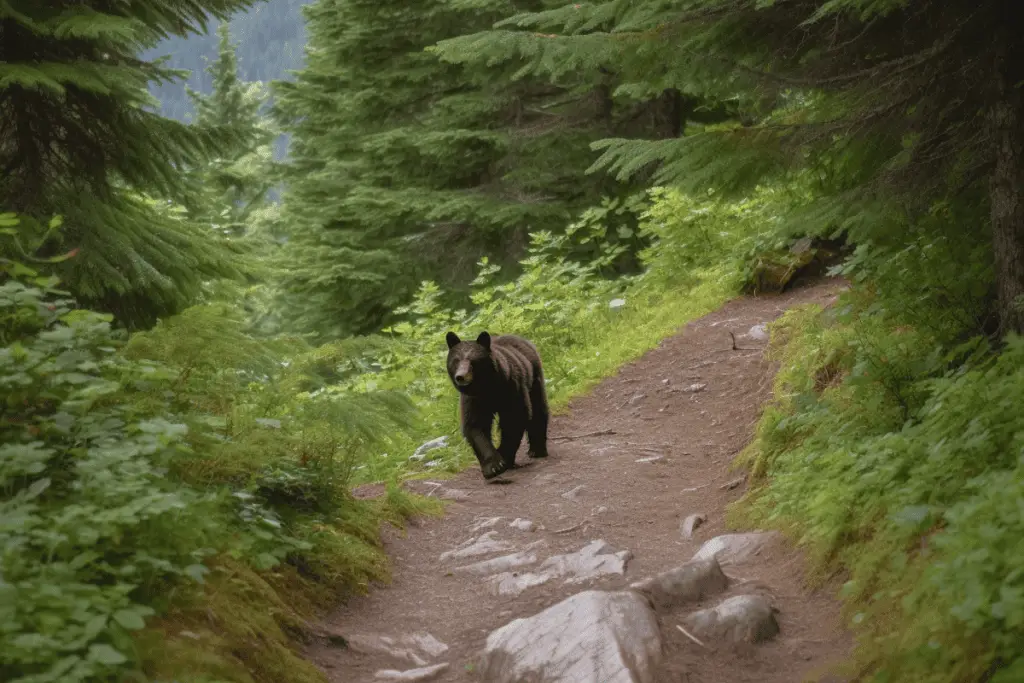
Now, some might argue that they can use other deterrents, like noise or intimidation tactics. While those can sometimes be effective, nothing matches the proven efficacy of bear spray. Studies have shown that it’s the most successful method of deterring bear attacks – it works in 90% or more of cases.
Remember, when exploring bear-active regions, your safety and respect for wildlife go hand in hand. So, packing bear deterrents isn’t just a smart choice; it’s a responsible one. It allows us to coexist peacefully with these majestic animals, while also ensuring we’re prepared for any unexpected encounters.
Spray Timing: Knowing When to Use Your Bear Spray
Navigating bear country can be thrilling, but knowing when to use your spray is key to ensuring both your safety and that of the bears. So, how do you identify a potential bear threat?
Bear spray isn’t a preventative tool, meaning it’s not something you use just because you’re in an area where bears might be present. It’s a last line of defense to be used in specific situations when a bear is acting aggressively or charging toward you.
Typically, bears are as keen to avoid humans as we are to avoid them. If you spot a bear in the distance and it hasn’t seen you, the best course of action is to quietly back away and leave the area. If a bear has noticed you but isn’t acting aggressively, again, backing away calmly while speaking in a low, firm voice can help signal to the bear that you’re not a threat.
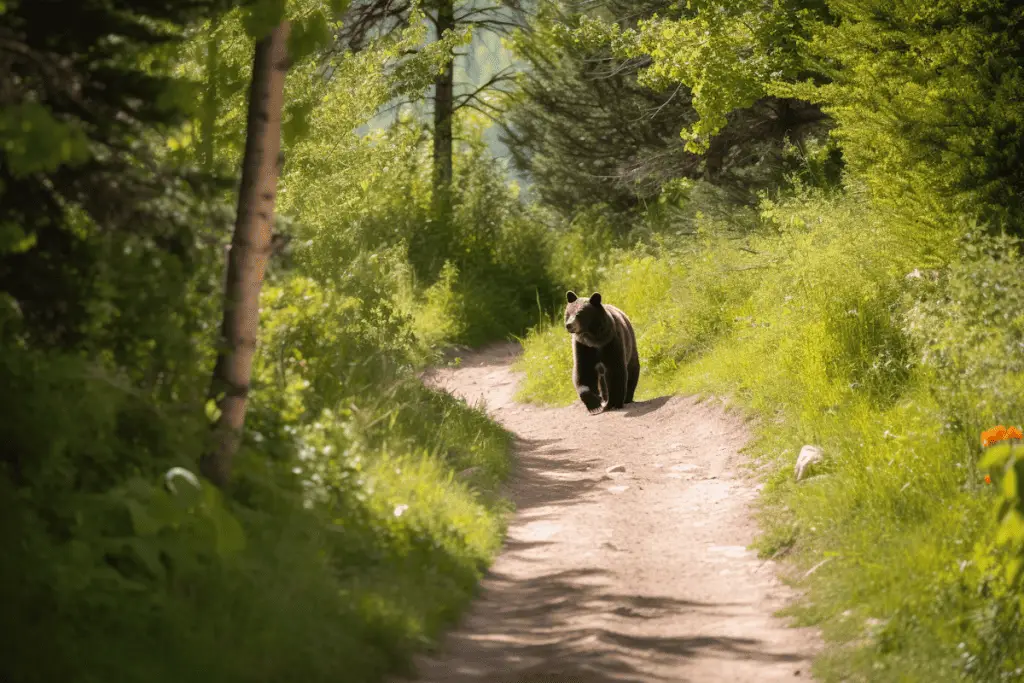
But let’s say a bear starts to approach you, seeming more curious than aggressive, like it’s trying to get a better scent or a closer look. This is when you should start to assert your dominance. Stand your ground, make yourself look bigger, and speak in a loud, firm voice. You might also clap your hands or bang pots together if you have them. In most cases, this will be enough to scare the bear away.
However, if a bear continues to approach despite your efforts, or if it starts to charge, that’s when it’s time for the bear spray. Remember, the goal is to create a cloud of spray between you and the approaching bear, so wait until it’s within a range of 30-60 feet, and then aim slightly downwards and give a strong spray.
Identifying potential bear threats and knowing when to use your bear spray is key to coexisting with these incredible creatures in their natural habitat. Remember, every bear encounter is unique, so staying alert and using your best judgment is always critical.
By the Numbers: How To Use Bear Spray
Knowing how to use bear spray correctly is as crucial as having it with you. Here’s a straightforward, step-by-step guide to ensure you’re prepared when it counts.
1. Carry It Accessibly: The first step starts even before a bear is in sight. Your bear spray should always be in a spot where you can grab it quickly – a holster on your belt, the pocket of your jacket, or an easy-to-reach compartment in your backpack.
2. Know the Wind Direction: If a bear encounter occurs, be aware of the wind direction. You don’t want the spray to blow back at you. If the wind is against you, try to move to the side, but do so calmly and non-threateningly.
3. Remove the Safety: Bear sprays have a safety cap or tab to prevent accidental discharge. When you’re ready to use the spray, remove this safety feature. Practice this beforehand so you’re comfortable doing it quickly in a high-stress situation.
4. Aim Correctly: Bear spray isn’t like a gun – you’re not aiming for a precise spot. Instead, aim slightly downward in front of the approaching bear; this creates a wall of spray between you and the bear.
5. Use Short Bursts: Spray in 1-2 second bursts while the bear is still 30-60 feet away, then pause to assess the situation. This technique conserves your spray and helps create that protective barrier.
6. Retreat Slowly: Once the bear is deterred, back away slowly while keeping your eyes on the bear, but avoid direct eye contact as bears may interpret this as a threat. Don’t run as this could trigger a chase response.
Remember, bear spray is a last resort tool to be used when a bear is charging or behaving aggressively. As always, prevention is the best policy – make noise while hiking, travel in groups, and be alert to your surroundings to minimize the chance of a bear encounter. Be bear aware, and stay safe out there!
After the Encounter: Navigating the Post-Bear-Spray Scenario
So, you’ve had to use your bear spray – a situation no one wants to find themselves in, but you’re prepared and have managed it effectively. The bear is retreating, but what happens next? Here’s what you should do after a bear encounter.
Firstly, keep your calm. Watch the bear, but avoid direct eye contact, which can be seen as a threat. As the bear retreats, slowly back away yourself. Do not turn your back on the bear or run – this could trigger a predatory response.
As soon as you’re at a safe distance, leave the area. The bear may return after the effects of the spray wear off. Be sure to warn any other hikers about the bear’s presence and report the encounter to park rangers or local wildlife authorities, so they can manage the situation.
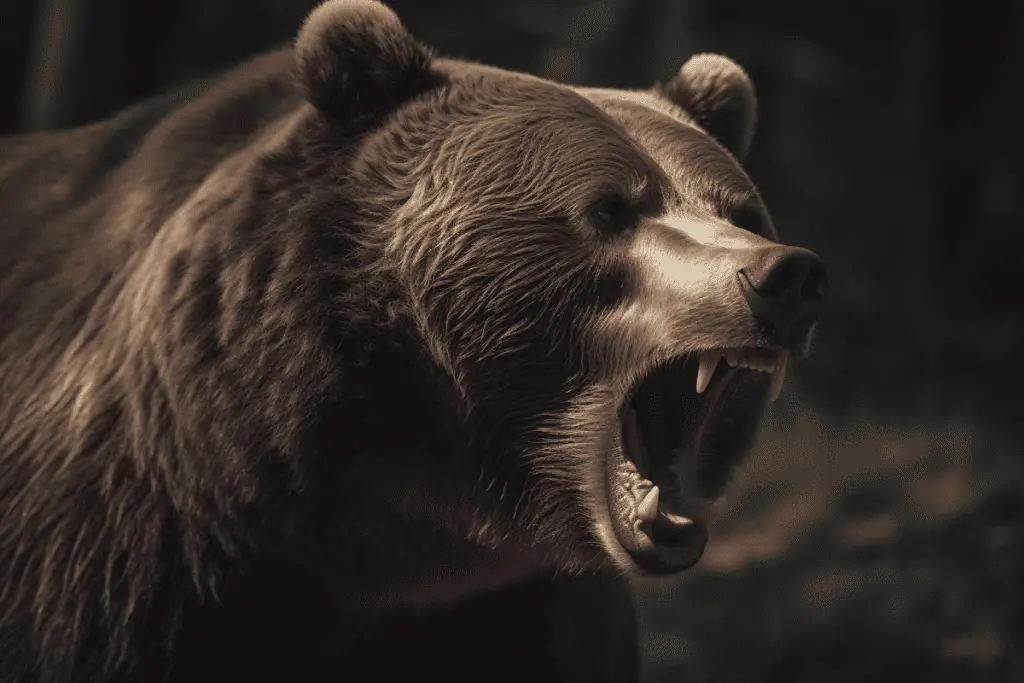
Upon reaching safety, it’s important to check yourself and others in your group for any injuries that might have occurred during the encounter. It’s also common to experience an adrenaline crash after such a high-stress event, so taking a moment to rest and process what’s happened is a good idea.
Next, assess your bear spray. If it’s empty or nearly so, you’ll want to replace it before heading into bear country again. Remember, don’t leave empty canisters in the wild. They should be carried out and disposed of properly to minimize environmental impact.
Finally, reflect on the encounter. Each one is a learning opportunity. Think about what led up to the bear’s approach, how you responded, and what you might do differently next time.
A bear encounter that requires using your bear spray is undoubtedly an intense experience. However, by knowing what steps to take afterwards, you can ensure you and the bear walk away safely while continuing to enjoy the great outdoors.
How To Buy Bear Spray: Key Factors To Consider
Picking Your Protector: Key Factors in Selecting the Right Bear Spray
When you’re gearing up for an adventure in bear country, finding the right bear spray can feel a little overwhelming. But don’t worry, we’ve got you covered! Here’s a rundown of key factors to consider when choosing the right bear spray for you.
1. EPA Approval: First things first, make sure the bear spray you’re considering is approved by the Environmental Protection Agency (EPA). The EPA ensures that bear sprays contain the right concentration of capsaicin and related capsaicinoids – between 1% and 2%. Anything less might not be effective, and anything more could be harmful to bears.
2. Spray Distance: Look for a spray that can reach at least 16 feet, though some can reach up to 40 feet. The greater the distance, the more space between you and an approaching bear, giving you a better chance of deterring an attack before the bear gets too close.
3. Spray Duration: Consider how long the spray lasts. Most cans empty in about 5 to 9 seconds. A longer spray duration can be useful if there’s more than one bear or if the first burst doesn’t deter the bear.
4. Safety Clip: Your bear spray should have a safety clip or cap to prevent accidental discharge. But it also needs to be easily removable so you can use the spray quickly in a pinch.
5. Expiry Date: Bear spray does expire, usually after 3 to 4 years. Always check the expiry date to make sure it’s not too close to your planned trip.
6. Size and Weight: Think about what you can comfortably carry. Larger canisters typically spray further and longer but can be heavier and more cumbersome.
Remember, the ‘right’ bear spray isn’t just about the product specifications, but also about what you feel comfortable and confident using. After all, it’s a tool designed to protect you in potentially life-threatening situations, so feeling secure in your ability to use it is paramount.
Perfecting the Spray: How to Practice Using Pepper Spray
You’ve got your bear spray, and you’ve read up on when to use it, but are you confident you’d know what to do in the heat of the moment? Here’s why it’s vital to practice your bear spray skills, and how to go about it.
The reality is, bear encounters can be tense, and chaotic. They’ll often happen without much warning too. It’s one thing to understand how bear spray works in theory, and another entirely to use it correctly when a 600-pound grizzly is charging towards you. That’s where practice comes in. It allows you to respond quickly, accurately, and effectively in a high-stress situation.
To start, familiarize yourself with your bear spray canister. Know how to remove the safety clip or cap swiftly, and get a feel for the weight and grip of the canister. Practice these movements repeatedly until they feel instinctive.
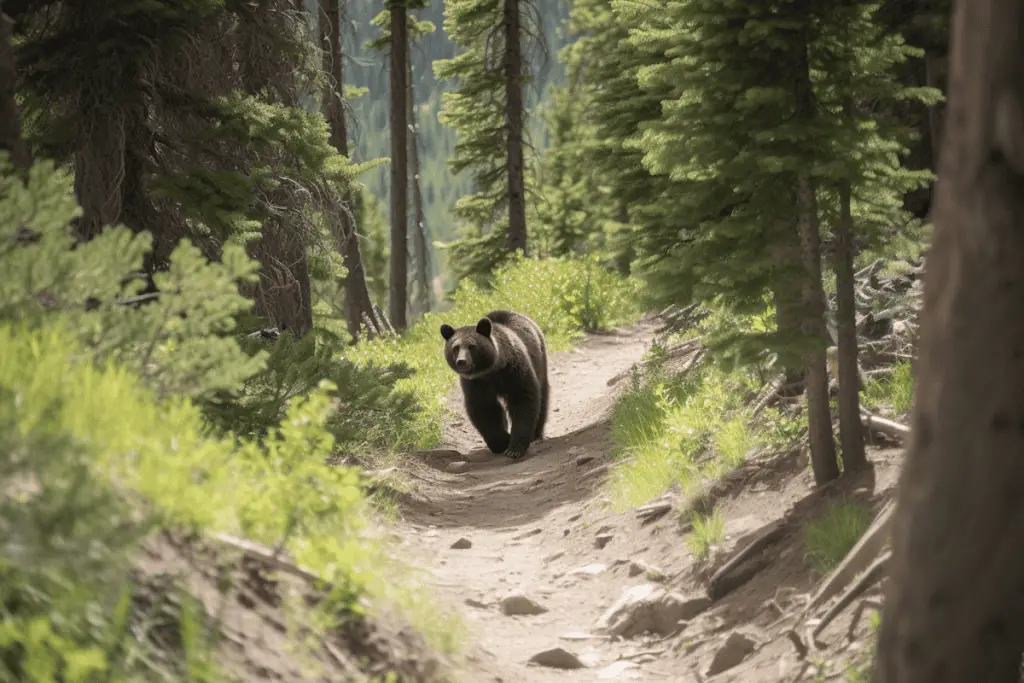
Next, try a few practice sprays. AlaskaBears.gov recommends you use an inert practice canister. Alternatively, you could practice with an expired canister. Bear spray canisters work under pressure, so the force of the spray might be more than you expect. A few test sprays can help you get used to this. Note the spray pattern and range, and practice aiming at a target to build your accuracy. Remember, you should be aiming slightly downward in front of the bear.
It’s also essential to simulate real-life scenarios as much as possible. Practice pulling out your bear spray from wherever you’ll be carrying it. Whether it’s a holster, a backpack pocket, or somewhere else, you should be able to access your spray quickly and without fumbling.
Remember, your bear spray is there to protect you, but it’s only as effective as your ability to use it correctly. Practice until you’re completely confident in your ability to quickly and correctly use your bear spray in an emergency. After all, if you find yourself face-to-face with a bear, you’ll be glad you did.
Prepared for the Unexpected: Handling Mishaps
Even with the best preparations, mishaps can happen. A sudden gust of wind could blow the spray back at you, or you might accidentally discharge the spray while practicing or packing. Knowing how to handle these situations safely is vital. Here’s what to do if you experience a bear spray mishap.
Accidental Discharge: If you accidentally spray yourself or someone else, it’s crucial to act quickly. The capsaicin in bear spray irritates the eyes, skin, and respiratory system, causing temporary discomfort but not permanent damage.
Immediately rinse the affected area with cold, clean water. If your eyes are affected, blink rapidly to stimulate tear production. Avoid rubbing your eyes, as this can spread the spray. Once you’ve rinsed as much of the spray off as you can, air-dry the affected area—don’t use towels or cloths, as they can hold onto the capsaicin and reapply it to the skin.
If you inhaled some of the spray, move to fresh air as quickly as possible and try to breathe normally. The effects should wear off within a few hours, but if discomfort persists, seek medical attention.
Spray Blowback: If you’re using your bear deterrent and the wind blows it back at you, the same treatment principles apply. As soon as possible, rinse the affected area with water and get to fresh air.
Preventing Mishaps: To avoid mishaps in the first place, always be aware of the wind direction before using your bear spray, and make sure the safety clip or cap is secure when you’re not using it. Regularly practicing your draw and aim can also reduce the risk of accidental discharge.
Remember, while bear spray mishaps are unpleasant, the spray isn’t permanently harmful to humans or bears. But knowing how to handle these situations can keep an unfortunate accident from turning into a panic. Safety first, always!
How to Properly Store Bear Spray
When you’re not using your bear spray, such as when you’re at home or it’s off-season for bears, store it in a cool, dry place out of direct sunlight. Extreme temperatures can affect the effectiveness of the spray or even cause the canister to rupture, so avoid leaving it in a hot car or near a heat source.
In terms of altitude, most pepper spray manufacturers state their products can be used up to elevations of 12,000 feet, but check the specifics on your canister just in case.
Also, pepper spray does have an expiry date, typically about four years after manufacture. After this date, the spray might not come out with as much force, reducing its range and effectiveness. So, be sure to check the expiry date on your canister regularly.
How to Get Rid of Old Bear Spray
Lastly, don’t forget about proper disposal. When your bear spray is expired or empty, don’t just throw it in the trash. Many recycling centers or outdoor stores offer safe disposal services.
By properly storing and carrying your bear spray, you’ll be ensuring this vital safety tool is ready to protect you when you need it most.
Debunking Common Myths
When it comes to bear spray, there’s a fair share of myths and misconceptions circulating. Let’s set the record straight and debunk some of the most common myths about bear spray.
Myth 1: Bear Spray is a Bear Repellent: This is perhaps the most widespread myth. Bear spray is not a repellent, it’s a deterrent. It’s not meant to be sprayed on equipment or around your campsite to keep bears away. In fact, doing so can attract bears as they’re curious creatures and may be drawn to the strong, unfamiliar smell.
Myth 2: Bear Spray is Not as Effective as Firearms: Studies have shown that bear spray is actually more effective at deterring bear attacks than firearms. Bear spray creates a wide cloud of irritants that a charging bear can’t easily avoid. With firearms, you’d need exceptional skill to stop a charging bear, especially in a high-stress situation.
Myth 3: Bear Spray Works on All Animals: While bear spray will likely irritate any animal it hits, it’s specifically designed to deter bears. Other animals may react differently, and it’s not recommended to rely on bear spray for all animal threats.
Myth 4: More Capsaicin Means More Effective: The EPA regulates bear spray to contain between 1% and 2% capsaicin and related capsaicinoids. Any more could potentially harm the bear, and any less might not be effective. More isn’t always better.
Myth 5: All Sprays are the Same: There are differences among bear sprays in terms of spray distance, duration, and other features. It’s worth researching and choosing one that fits your needs and comfort level.
Remember, when it comes to safety in bear country, accurate information is your best tool. By debunking these myths, you can ensure that you’re prepared and informed for your outdoor adventures.
Beyond the Canister: Bear Spray Alternatives
While bear spray is a highly effective tool for deterring bear encounters, it’s important to know about alternatives that can also help you stay safe in bear country. Let’s explore some of these options.
Awareness and Prevention: The first and most effective bear deterrent is being aware of your surroundings and taking steps to avoid bear encounters in the first place. This means making noise as you move through bear habitat, especially near streams or in dense vegetation where bears might not hear you coming. It also means properly storing food and other attractants to avoid luring bears to your campsite.
Bear Bells: While their effectiveness is a matter of some debate, bear bells are often used by hikers to make noise and alert bears to their presence. However, they should not be your only deterrent method. The sound of bear bells is not very loud, and it might not be enough to alert a bear to your presence, particularly in a windy or densely vegetated area.
Air Horns: Air horns can be an effective way of scaring off bears. The loud noise can startle them and encourage them to move away. They are lightweight and easy to carry, but they are also disruptive to other wildlife and hikers, so use them responsibly.
It’s important to note that while these alternatives can be part of your bear safety toolkit, none are as effective as pepper spray when used correctly. Combining several strategies will give you the best chance of a safe and enjoyable experience in bear country.
A Respectful Coexistence: Wrapping Up Our Bear Spray Guide
Navigating the wilderness safely is not only about equipping ourselves with the right tools and knowledge but also about respecting the habitats and lives of the creatures we share it with. Bear spray plays a vital role in promoting this respectful coexistence, allowing us to deter potential bear threats without causing them lasting harm.
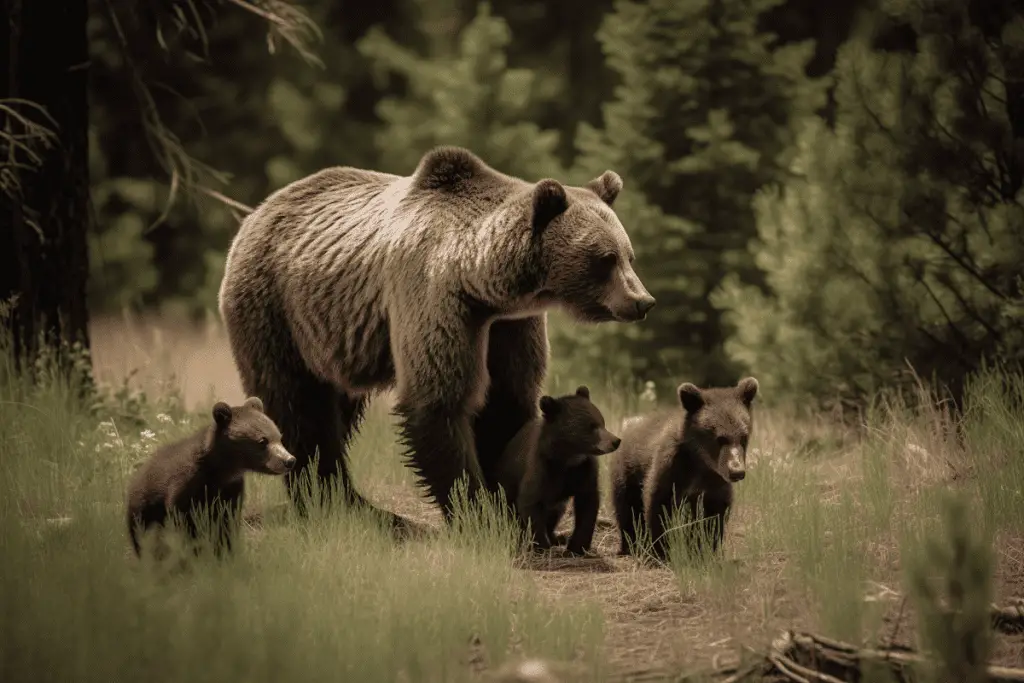
From understanding what bear spray is and how to use it, debunking common myths, to exploring alternatives, we’ve covered a lot of ground in this guide. It’s important to remember that bear spray should not be viewed as an absolute guarantee of safety, but rather as a key component of a larger bear safety plan. This plan should also include understanding bear behavior, staying vigilant, and practicing good camping and hiking etiquette.
Having spray and knowing how to use it can give you confidence in the great outdoors. So, the next time you lace up your hiking boots or set up camp under the stars, remember these guidelines. By doing so, we can ensure our wild adventures are safe, enjoyable, and respectful toward the magnificent creatures we’re lucky to share this planet with.
